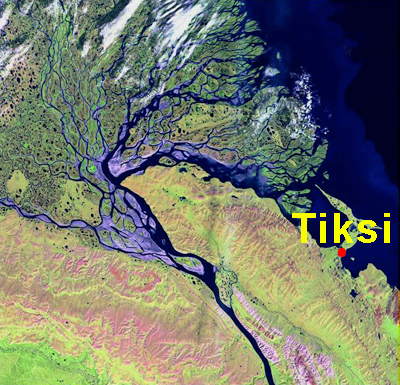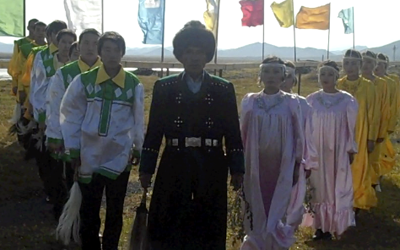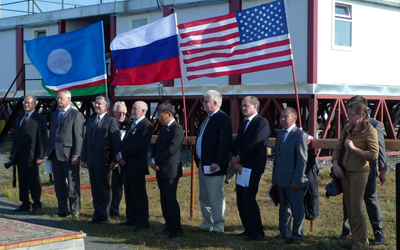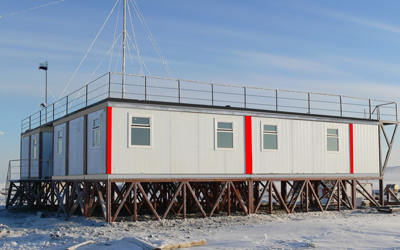Tiksi Observatory
Celebrating the opening of an international climate observatory in Russia

An unusually warm wind swept across the Russian tundra, flapping a row of flags behind a group of international researchers and government officials. Colorfully costumed Yakut dancers commanded the full attention of dignitaries and guests as they performed a native blessing ceremony to mark the grand opening of the Tiksi Hydrometeorological Climate Observatory.
Scientists, officials and members of the small community of Tiksi gathered to celebrate the opening of the Arctic observatory at nearly 72 degrees north latitude. The observatory is a result of collaborations over the past four years among NOAA, the National Science Foundation, the Russian Federal Service for Hydrometeorology and Environmental Monitoring (Roshydromet), the Polar Foundation, and the Finnish Meteorological Institute. The partners worked to finance and equip this remote location for monitoring long-term climate change.
"Although several observatories ring the Arctic that are supported by the eight individual Arctic countries, this is the first facility that was conceived from the beginning to be an international partnership" said Taneil Uttal, a meteorologist at ESRL's Physical Sciences Laboratory.
The port town of Tiksi is situated on the shore of the Laptev Sea in the far reaches of Russia's Sakha Republic. Tiksi's pristine air and exposure to polar climate conditions are among reasons the scientific community find it an interesting location. Because it sits at the junction between Atlantic and Pacific air masses, scientists can also study radiation fluxes and a variety of clouds and aerosols. Huge stores of carbon are locked into permafrost under the Lena River drainage basin, which can reveal regional climate patterns and changes. The Laptev Sea is an area of such large ice production that it has been termed "the ice factory of the Arctic Ocean" and is the source of much of the sea ice that transits the Arctic Ocean.
Located five miles out of town, the "Polyarka" observatory was originally a prestigious Russian science station that began collecting geophysical data in the 1930s. Sixty years later, the station was beginning to languish.
In 2006, NOAA and Roshydromet hosted the first official meeting to develop official agreements for scientific cooperation. At about the same time, the International Polar Year (IPY) focused attention on the region, and the Russian Arctic and Antarctic Research Institute (AARI) and NOAA's Earth System Laboratory (ESRL) spearheaded the effort to rejuvenate the station. The Tiksi Hydrometeorological Observatory project became official.
Uttal and her AARI colleague Alexander Makshtas led the project from its inception, but it hasn't been easy. They worked continually with countless people in the U.S., Russia, and Finland to facilitate the overwhelming logistical demands of updating this isolated station. Work and construction permits, shipping and customs issues, contracts, agreements, international travel arrangements, and permission to operate the site, all had to be addressed.
"I think many have been doubtful that we'd get this project off the ground," said Uttal.
Yet now the site boasts a new weather station, clean air facility, and 60-foot meteorological tower, all equipped with state-of-the-art scientific instruments. Contributions of expertise and instruments have come from across NOAA and Roshydromet offices, from other agencies, including the National Science Foundation, and from the Russian Academy of Science and the government of the Sakha Republic in which Tiksi resides.
The Tiksi observatory will be a critical part of an international network of stations circling the Arctic; its broad collection of continuous measurements (such as temperature, winds, greenhouse gases, ozone, and black carbon) will be made freely available to the global research community.
"Countries will have to partner together to be able to do climate-scale research together," said Uttal. Representing NOAA's support of this effort, Jack Hayes, Assistant Administrator of the National Weather Service, signed an MOU at the ceremony that acknowledged the importance of collaborative, internationally supported Arctic climate science.
Barb DeLuisi, Fall 2010




- Related Links
- Learn more about Tiksi Observatory